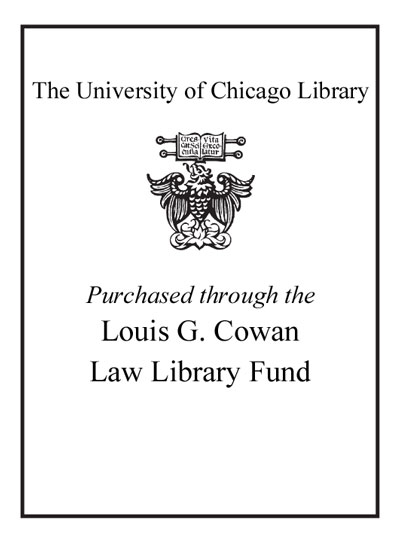Watercourse co-operation in Northern Europe : a model for the future /
Saved in:
| Author / Creator: | Fitzmaurice, Malgosia, 1957- |
|---|---|
| Imprint: | The Hague : T M C Asser Press, c2004. |
| Description: | xii, 206 p. : map ; 25 cm. |
| Language: | English |
| Subject: | |
| Format: | Print Book |
| URL for this record: | http://pi.lib.uchicago.edu/1001/cat/bib/5648757 |
Table of Contents:
- Preface and acknowledgements
- Abbreviations
- 1. Introduction
- 1.1. The problem
- 1.2. The aim of the book
- 1.3. The structure of the book
- 2. The law of the navigational and non-navigational use of international watercourses
- 2.1. Introduction
- 2.2. The definition of international watercourses
- 2.3. Main theories on the use of international watercourses
- 2.3.1. The theory of absolute sovereignty (the Harmon doctrine)
- 2.3.2. The theory of absolute territorial integrity
- 2.3.3. The theory of community of interest
- 2.4. The navigational use of international watercourses
- 2.4.1. The right of free navigation
- 2.4.2. The meaning of G++international watercourseG++ for the purposes of the right of free navigation
- 2.4.3. The legal basis of the right of free navigation on international watercourses
- 2.4.4. The subjects of the right of free navigation on international watercourses
- 2.4.5. The regulation of navigation on international watercourses
- 2.4.6. The navigational use of northern European watercourses: an overview
- 2.5. The non-navigational use of international watercourses
- 2.5.1. The principle of equitable utilization
- 2.5.2. The obligation not to cause significant harm
- 2.5.3. The relationship between the principle of equitable utilization of international watercourses and the obligation not to cause significant harm
- 2.5.4. Procedural obligations relating to the use of international watercourses
- 2.6. Liability for damage to international watercourses
- 2.7. Settlement of disputes
- 2.8. International river commissions: the institutional aspect
- 2.9. Concluding remarks
- 3. International watercourses and the rights of indigenous peoples: the Saami of Lapland and Finnmark
- 3.1. Introduction
- 3.2. The protection of indigenous peoples under international law
- 3.3. International legal instruments and the rights of the Saami with respect to the environment
- 3.4. The protection of the rights of the Saami under the laws of Finland, Norway and Sweden
- 3.5. Concluding remarks
- 4. Northern European co-operation regarding watercourses
- 4.1. Introduction
- 4.2. Norway and Sweden
- 4.3. Finland and Norway
- 4.4. Norway and Russia
- 4.5. Finland, Norway and Russia
- 4.6. Finland and Russia
- 4.7. Finland and Sweden
- 4.8. Concluding remarks
- 5. Northern European watercourse institutions
- 5.1. Introduction
- 5.2. Finland and Russia
- 5.2.1. The joint Finnish-Russian commission on the utilization of frontier watercourses
- 5.2.2. The agreement concerning regulation of Lake Inari
- 5.2.3. The frontier commission
- 5.2.4. The reindeer agreement
- 5.2.5. An overview of Finnish-Russian institutions
- 5.2.6. Conclusions
- 5.3. Norway and Russia
- 5.4. Norway and Finland
- 5.5. Finland and Sweden
- 5.5.1. Introduction
- 5.5.2. Scope of the FSFRCG++s functions
- 5.5.3. The nature of the FSFRCG++s functions
- 5.5.4. Relationship between the FSFRC and Finland and Sweden
- 5.5.5. Conclusions
- 5.6. Concluding remarks
- 6. Nordic watercourse co-operation and the sustainable use of water
- 6.1. Introduction
- 6.2. The role of law and the concept of sustainable development
- 6.3. International legal instruments on sustainable development and international watercourses
- 6.4. Nordic watercourse co-operation and sustainable development
- 6.5. Concluding remarks
- 7. Concluding remarks
- Bibliography
- Table of treaties
- Index

